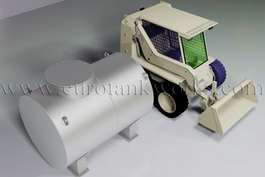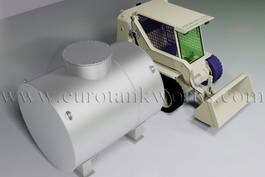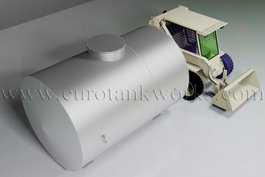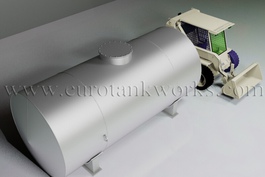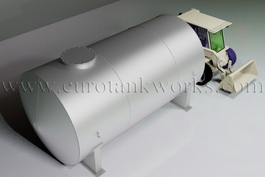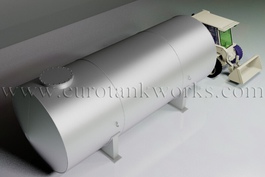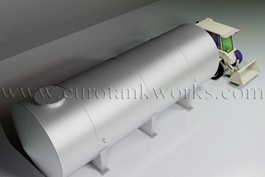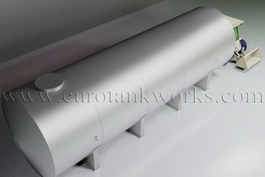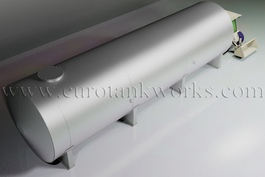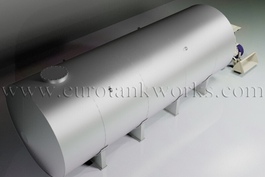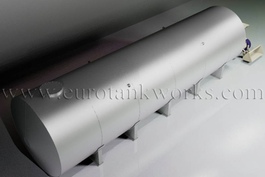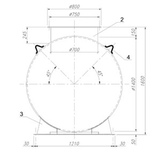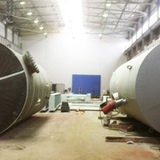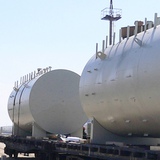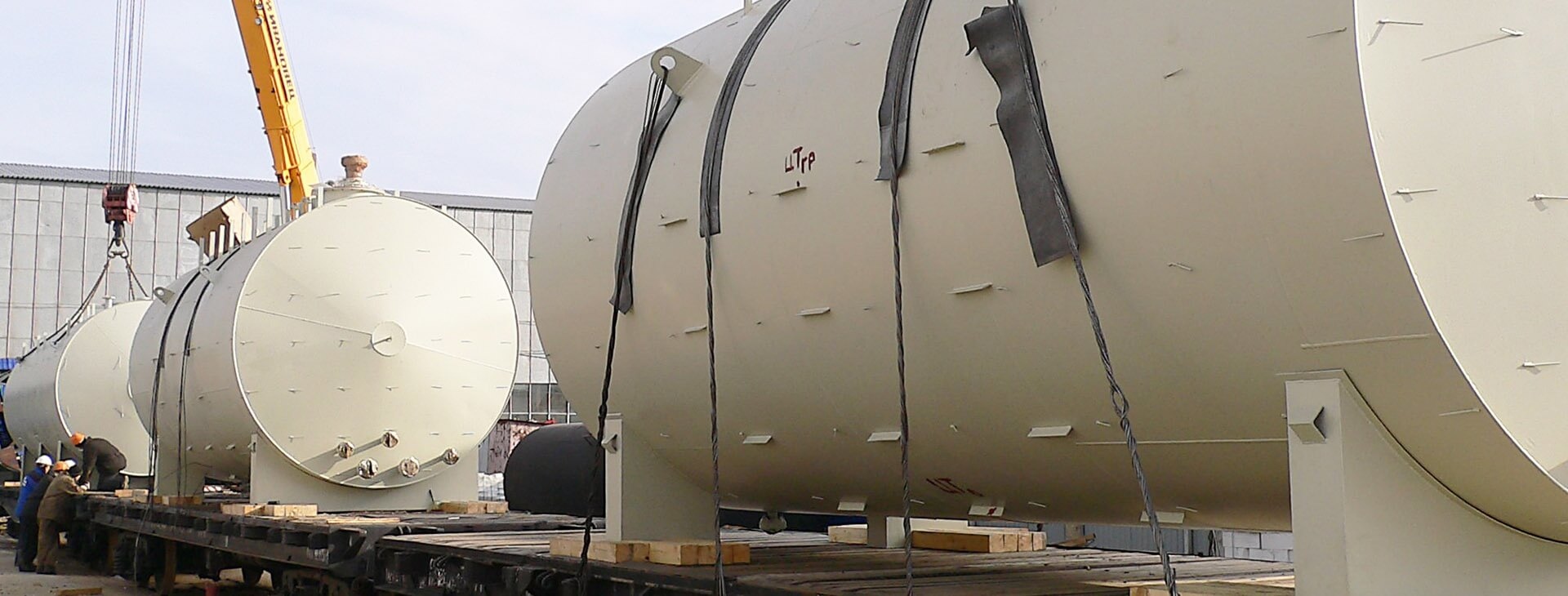According to our experience, horizontal steel tanks are basically used at tank farms and petrol stations as they are considered to be the most effective type of fuel storage equipment both from economic and technical points of view. Effectiveness of this tank type is provided, in the first place, by the variety of loading capacity and shapes, which are adjusted to the specific features of the enterprise.
Horizontal tanks can be double skinned (double-walled) and single skinned (single-walled). As a rule, singe skinned tanks are used to store non-aggressive and environmentally friendly liquids. Double skinned tanks - for oil, oil products and hazardous chemical liquids.
Horizontal Double Skinned Oil Tanks
Horizontal double skinned tanks guarantee the tightness of the tank and the absence of leaks of environmentally hazardous substances.
With the increasing stringency of environmental requirements, they began to be widely used in most industrial enterprises, performing many functions: reception, delivery, storage of substances.
The steel horizontal double skinned oil tank is a special vessel with two shells and free space between them. The interstice – the area between two shells - is filled with antifreeze or gaseous nitrogen. The distance between the shells should not be less than 4 mm.
Compared with the single skin oil tanks, this type of storage tanks has several advantages:
- Effective fuel spill protection;
- Interstitial space control;
- Ability to quickly detect depressurization;
- Minimization of negative environmental impact;
- Eco-friendly storage of hazardous fluids.
Double skinned tanks for oil products are divided into two types:
- Underground (usually installed at gas stations and designed to store finished petroleum products);
- Above-ground (used for storage of crude oil, semi-finished distillates, cracked products).
The use of horizontal double skinned tanks is not limited to the oil industry - they are also quite successfully used in other spheres, for example agriculture, where they play the role of storage of chemicals necessary for the mineral fertilizers production.
The main equipment necessary for the reliable and safe operation of double skinned oil tanks is measuring instruments, level gauges, vapor detectors and devices for draining and loading products.
During operation, it is very important to monitor the excess fluid pressure in the interstice. It should not exceed 0.001 MPa. A decrease in pressure signals the possible entry of the stored product into the area between the walls.
Triggering vapor detector sensors that are mounted on the necks of double skinned oil tank may also indicate a possible depressurization.
Horizontal Single Skin Oil Tanks
All versions of horizontal tanks may be produced with either one or several sections. The sections are formed by special separating walls inside the shell . Thus the horizontal tank becomes divided into two or more sections, meant for storing different types of materials. While producing two-section or multi-section tanks we guarantee the leak tightness of the sections.
The structure of horizontal cylindrical steel tank:
- Bearing part,
- Wall of the body and stiffening plates,
- End wall elements of the body (bottom),
- Attachments.
There are several types of bearing part to be produced:
- Steel supporting structure (poles);
- Saddle shaped supporting structures made of iron concrete;
- Basements of compacted sand with hydrophobic layer.
The body of the horizontal tank consists of cylindrical and end wall parts. The cylindrical part is also usually called “a wall” and the end wall elements – bottoms.
Cylindrical part of the body, i.e. tank wall, bears metal shells in the quantity, stipulated in the design project, and amounting to 3.25 m in diameter. The metal thickness is determined by durability and stability calculations. The shells are welded end-to-end while the assembly seal may be done overlapped. The body of the tank is often assembled with stiffening rings.
The bottoms of horizontal tanks can belong to either of the following types:
- Flat bottoms (rib-free or webbed) – are used in tanks with excessive pressure up to 40 kPa;
- Conical bottoms – are used in tanks with excessive pressure from 40 kilopascal to 70 kPa.
Tanks are equipped with earth connection, staircases, access man-way plates, loading and dispensing machinery, ventilation and measurement-control tools. If necessary, the tank is equipped by heating-up devices. Horizontal tanks are also subjected to corrosion-preventive procedures and heat insulation.
We produce more than 500 horizontal tanks for oil products and horizontal containers for water, food raw material and chemical products annually.
Automatic and auto-manual welding equipment Lincoln Electric along with the modern complex of metal-processing machines are used in our production. This enables us to provide an excellent quality of tank installation together with the decrease in the time of production and manual work expenses.
